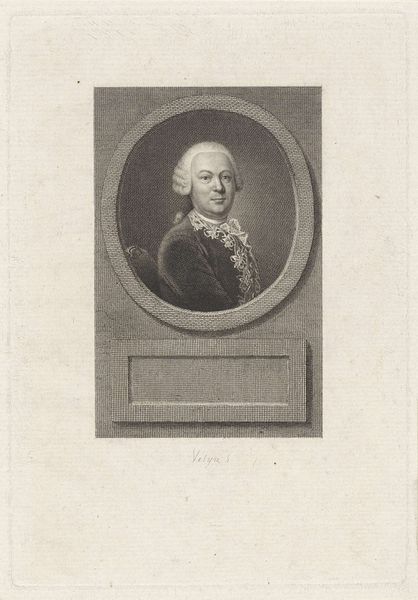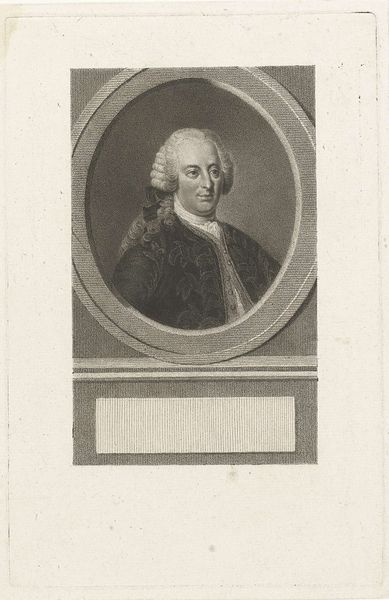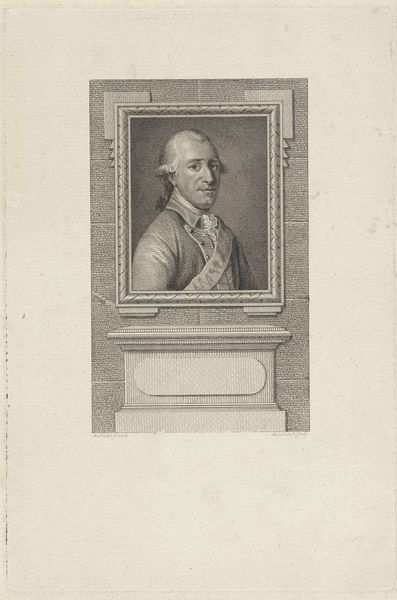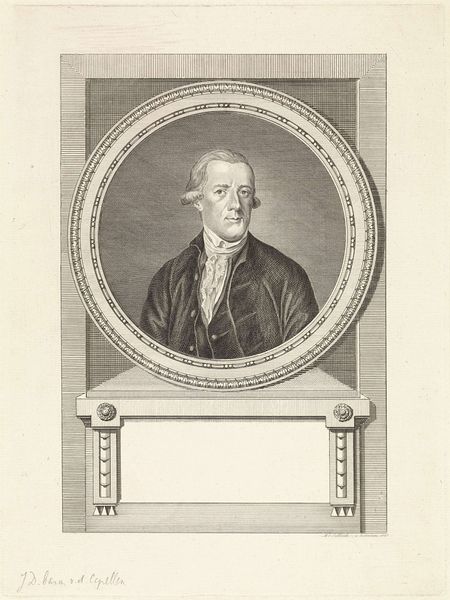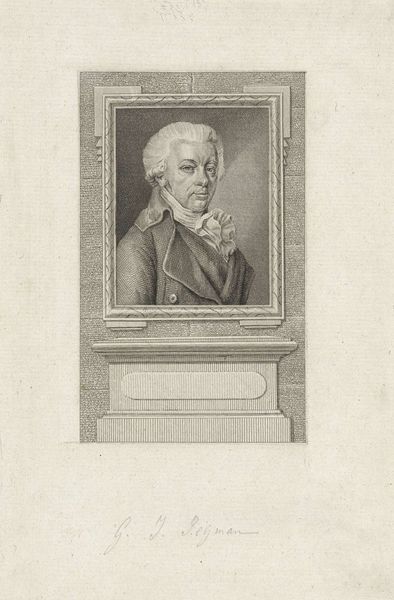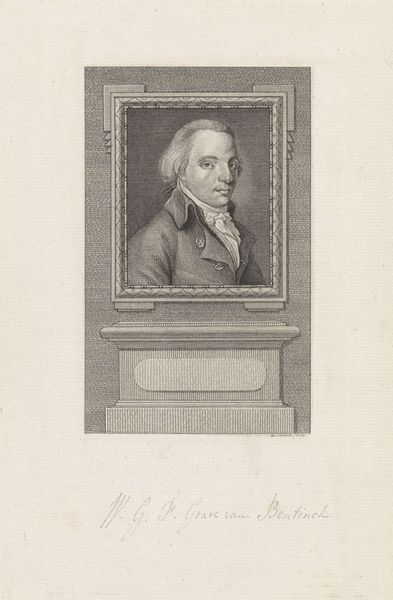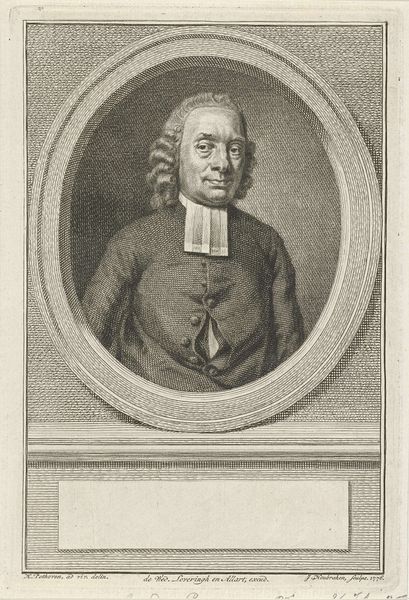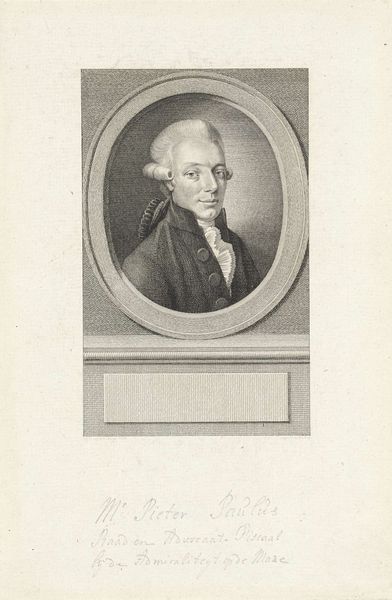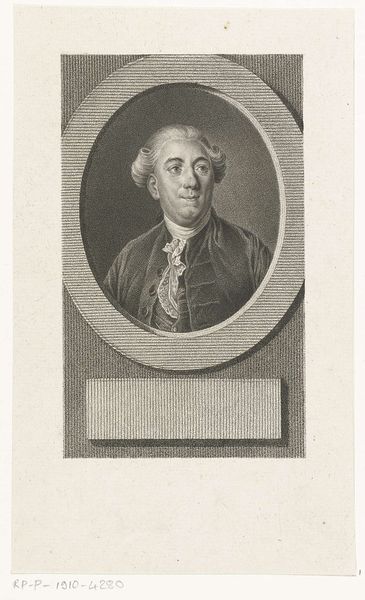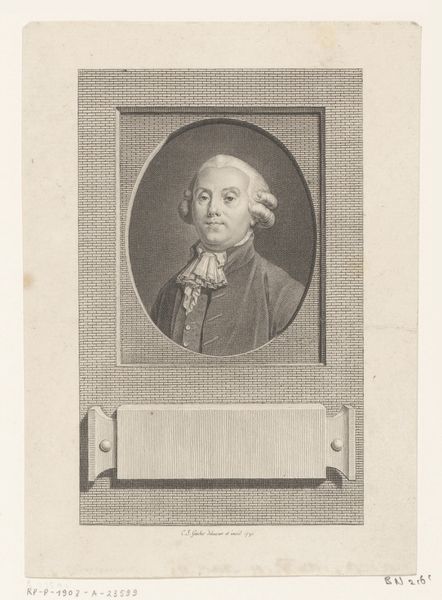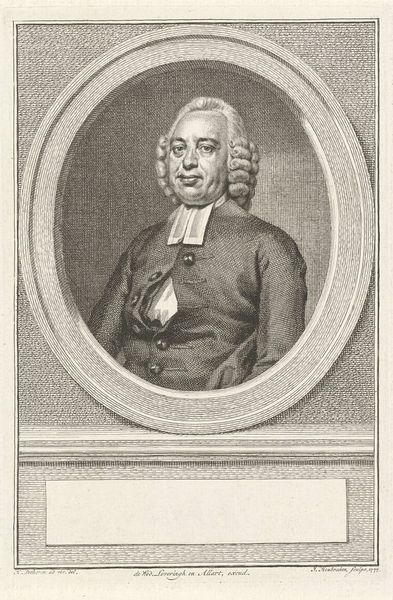
Dimensions: height 224 mm, width 162 mm
Copyright: Rijks Museum: Open Domain
Editor: So, here we have Jacob Houbraken’s "Portret van Joannes Nomsz," created between 1777 and 1779. It’s an engraving. The precision is striking! It really captures a sense of the subject's presence. What stands out to you about it? Curator: What strikes me immediately is the material process behind this "high art" portrait. Engraving, at its core, is a form of labor. How does the act of meticulously incising lines into a metal plate, a highly skilled and time-consuming craft, affect our understanding of the man depicted? What social context allows for the resources required for the portrait's production? Editor: That's a great point. I was focusing on the image itself, but I hadn't thought about the labor involved in making the print. The subject seems quite well-to-do, does the technique used play into ideas around the image? Curator: Exactly. Engraving held a specific cultural value, indicating status, permanence, and accessibility through reproduction. Who could afford to commission such a portrait? Who had access to prints? The materials and the labor were not neutral choices, consider too, the paper and ink. How were these sourced, and by whom? What level of technical mastery was demanded, and how does this influence our view on Houbraken's role, as the artisan who provides Nomsz an almost ubiquitous visual representation? Editor: So by thinking about the materials and processes, we understand that this portrait, far from being a straightforward depiction, is embedded within a network of social and economic relationships. How subversive is that idea? Curator: Subversion isn't always about outright rejection; it can be about reinterpreting value. Understanding that materiality and process shifts the dialogue. Where does “art” actually begin and end, at what point do you agree with its message or oppose it, or embrace it for its complexity and contradiction. Editor: This has really opened my eyes to considering art from a completely different angle! I'll definitely be paying more attention to the "how" and "why" behind a work’s creation, and think on who has agency. Curator: Indeed. And remember, that perspective informs how we read visual rhetoric today. Art can often distract from artifice, the next question is what exactly is its intent?
Comments
No comments
Be the first to comment and join the conversation on the ultimate creative platform.

